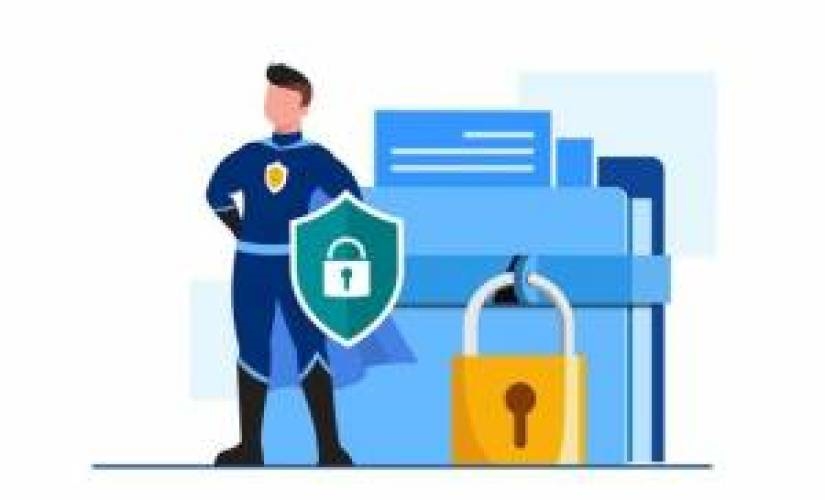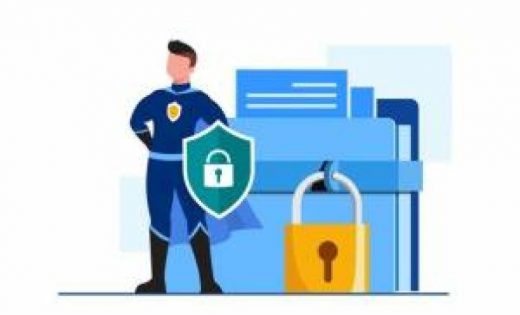A Breach vs. a Security Incident: Main Differencies and Key Definitions
A Breach vs. a Security Incident: Main Differencies and Key Definitions

There’s no denying that data security always has a veil of complexity around it. No matter how cautious you are and how many security measures you apply, the handling of personal data carries risks.
However, knowing more about security ensures that you won’t get caught off guard if any issues do catch up with you. Mainly understanding the difference between terms like “data breach” and “security incident” is crucial.
When any of the companies you use reports either, should you worry? Let’s find out.
What Do You Know About Data Security?
During the 2020 pandemic, the issue of data security became even more pressing. Companies had to make rapid-fire decisions and move more operations into the virtual space. But employee homes are rarely as secure as office networks and require additional measures. It’s So it’sjust personal data, but the whole company that’s at stake.
The education sector is another area that didn’t see quick and secure adjustments. Some reports state that ransomware attacks increased by seven times in 2020, compared to 2019. Last year was record-breaking for several reasons, including school hacks.
As fascinating as the statistics are, school hacks don’t just help desperate students forge grades or copy exam questions. They expose anyone involved in the system to credit fraud or identity theft.
On a larger scale, imagine a corporation that has suffered a security breach. Volumes of personal data could be subjected to potentially violating schemes.
Any incident can have implications for security and reputation. But what exactly can be deemed a security incident?
What Is a Security Incident?
Every company and organization complies with specific security and privacy policies about servers, workstations, and network hubs. Therefore, any violation or disruption thereof can be considered a security incident. And no matter how minor or major an incident is, it should be promptly analyzed and amended.
This is a more general term that involves different types of incidents, not necessarily data-related. For example, it includes data breaches, but to understand the topic better, let’s first cover why security incidents occur and their different types.
Why Do Security Incidents Happen?
The first step to taking care of your security is understanding where threats can come from and what measures you can take to reduce the risks. Here are some of the common reasons why security threats happen.
Misusing Portable Storage
Any portable type of media — like hard drives, SD cards, tablets, and smartphones — can carry personal data. But any interactions of such media with unfamiliar devices can expose them to malware.
As such, it’s not advisable to connect your devices and other media to unsecured networks or computers. It’s also not a good idea to use company-owned media out of the office.
Cracking Credentials by Brute Force
About 80% of stolen credentials were acquired by brute force — essentially, guessing login data by trying all sorts of letter, digit, and special symbol combinations.
This method is effective for hackers because many people use simple combinations like their birthdays, names, or even “12345678.” That’s why it is recommended to use long passwords that have both uppercase and lowercase letters in them, along with digits and special symbols, or use a passwordless authentication.
Spreading Malware via Websites and Web Apps
Never try to download anything from an unfamiliar source. Usually, what you’re actually downloading is malware. It can exploit the security flaws of the operating system you are using.
Sometimes, you don’t even have to download anything – any action on a shady website could cause it to run a malicious script.
It’s better to stick to official sources, but keep in mind that hackers can compromise big companies, too. We’ll get to some prominent examples later in the article.
Bypassing Email Spam Filters
Email is one of the most beloved ways for hackers to access personal information, steal credentials, or gain access to your computer. Malware usually hides behind attachments or compromised links.
Despite numerous warnings, many people still fall victim to such scams because hackers first gain access to someone on their contact list and masquerade as a friend or acquaintance.
Insider Jobs
Employees, former employees, and someone who’s not even on the staff can access the organization’s information and compromise its security.
Such incidents are hard to detect. And based on data sensitivity, you might require different levels of security measures.
Physical Access to Equipment
Another reason for security threats is when personal or corporate equipment gets into the wrong hands. If, for example, you’ve encrypted your hard drive, most of the time, it’s useless for an average thief. But if hackers get hold of a computer containing sensitive data, they can abuse or use it against you.
We can gather from these reasons that there are 101 ways to steal your data, and sometimes it just falls into malicious hands. However, exercising caution and using common sense are good starts in securing personal information. In addition, implementing employee training methods and employee feedback wouldn’t be amiss as well.
Types of Security Incidents within a Company
Now that you know how cybercriminals can gain access to data, let’s see what types of security incidents there are based on priority – how alert a company should be.
Incidents of High Priority
Getting closer to the main point of our topic, you’ll see that a breach is a type of high-priority security incident. This and other such incidents are the most serious and require immediate actions:
-
- Breach. Data breaches are usually initiated by someone involved with the company, such as employees, former staff, or subcontractors.
- Distributed Denial of Service. In this instance, multiple devices are connected via an online network to send requests to a targeted website. Due to the simultaneous nature of the requests from several sources, the website becomes unavailable for users. Such an attack can last from hours to weeks.
- Distributed Denial of Service Diversion. While users are usually unaware that something malicious is happening in the previous instance, the staff will certainly notice. However, in this one, the goal is to divert attention from an ongoing attack by targeting another system or server.
- Escalation of Unauthorized Privilege. Such incidents occur when someone (any employee or executive) sees a flaw in a company’s security system and decides to exploit it.
- Advanced Persistent Threats. Such incidents are initiated by hackers and involve several techniques and stages.
- Destruction of Service. Such attacks intend to harm an entire company, its internet presence, web and mobile applications, and backup systems.
Incidents of Medium Priority
While not as severe, medium-priority security incidents also require proactive security measures:
- Unauthorized access. This refers to using brute-force guesswork or stolen credentials to access a device or service.
- Malware infection. This type is one of the most common incidents. Antivirus software is known to cause, for example, Outlook issues. But once you deactivate it, cybercriminals are likely to gain access to devices or personal data by planting malware into a computer or smartphone.
Incidents of Low Priority
The last category is least severe; however, these examples might steer you towards the flaws in your security system. Such incidents call for creating a decision tree to access risks and visualize the decision-making process.
- False alarm. Attacks can be faked to lower the vigilance of cybersecurity personnel. However false they are, such instances should alarm you about potential gaps in the security system.
- Port-scanning activity. In such instances, data stays intact. But they are a red flag for securing the ports that traced the unauthorized activity.
So What Is the Main Difference Between a Breach and a Security Incident?
The critical difference is in the spectrum of the concepts. A breach is just one type of numerous security incidents. But it’s arguably the most profitable from the hackers’ standpoint.
Financial, healthcare, consumer, and even educational platforms are rich in data — particularly credit card and contact information. When lost or stolen, such data can be used for financial gain by cybercriminals.
On the other hand, a security incident doesn’t necessarily involve the loss of sensitive information. It could be an attack on a company’s online reputation or a simple false alarm.
Another difference is reporting obligations. Data breaches must be reported because they involve numerous stakeholders. But companies aren’t obliged to report security incidents that target just them.
Should You Report Security Incidents?
Under the GDPR, European companies are legally obliged to report any security incidents to the Information Commissioner’s Office (ICO). US public companies also have guidelines for reporting such incidents set forth by the Securities and Exchange Commission.
However, companies may avoid reporting the incident in detail under any policy or guideline.
Famous Data Breach Examples
As mentioned above, big companies put targets on their backs for the sake of success. In these three instances, unfortunately, the targets were big enough.
MyFitnessPal
In 2018, hackers gained unauthorized access to this popular fitness tracking app. It was a massive breach that resulted in a loss of data from 150 million accounts. As a result, MyFitnessPal had to improve security and introduce a zero-trust policy by which users always have to authenticate their identities.
The popular professional social network came under attack in 2012. A Russian hacker compromised 117 million emails and passwords, and users couldn’t access their accounts during the incident. As a result, the platform introduced two-factor verification.
Adobe
The software company experienced a hefty breach in 2013. Hackers stole 38 million IDs and passwords. Though the company stated that many of the accounts weren’t valid, many real accounts were compromised.
Conclusion
Personal data is one of the most valuable resources, but it’s also a gold mine for cybercriminals. In addition, as more and more people connect to the network, it becomes harder for virtual security to deal with data loss, theft, and other security incidents.
That’s why it is essential to educate yourself and your employees about handling data and abide by security policies. It’s also essential to understand where the threats can come from and how to minimize the risks.
The next step is setting strong security protocols, following corporate standards, and investing in proper safety measures.
The post A Breach vs. a Security Incident: Main Differencies and Key Definitions appeared first on ReadWrite.
(28)


